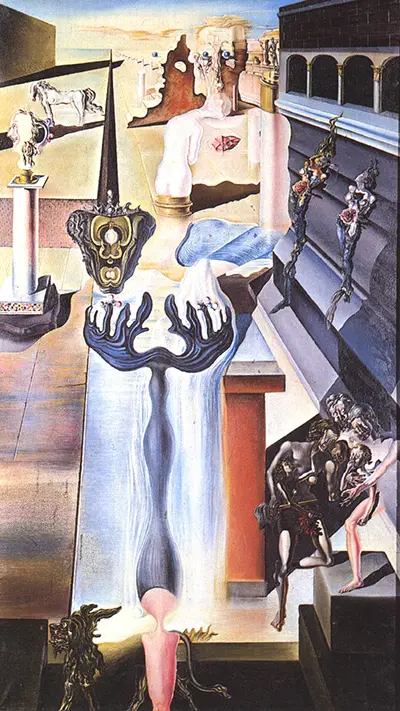Salvador Dali had begun painting The Invisible Man in 1929, though he would not complete the project until 1932. This was the first time his paintings would feature double images, and over the next decade this new approach to Dali's art was known as the 'paranoia- critical' period, by introducing this method, he presented people with with his extraordinarily imaginative creative art style, which allowed them to view the world of art in a more unique way. The Invisible Man is an image of a man, who hides in the components of the painting. The yellow clouds appear to form his hair, the ruined architecture represents his face and upper body, a waterfall creates the subtle outline of both his legs. All of Dali's paintings had an association with three general themes, the use of collages, depictions of a man's universe, and objects which amplified sexual connotations.
This painting however deals with Dali's fear of sex. There is a recurring image of a 'jug woman', which appears on the left of the picture, and to her right there is a womb shaped object, which partially runs parallel to the man's right arm. Beneath the man's body, a wild beast can be seen prowling at the very bottom of the painting. To the right of the beast there appears to be a sweet pink object with dark swirling arms extending from it. The artistic technique used for this particular painting is oil on canvas, and the size of the painting is 140 x 81 cm. These days, The Invisible Man can be viewed at The Reina Sofia National Museum in Madrid, Spain, and it is displayed in room 205.

